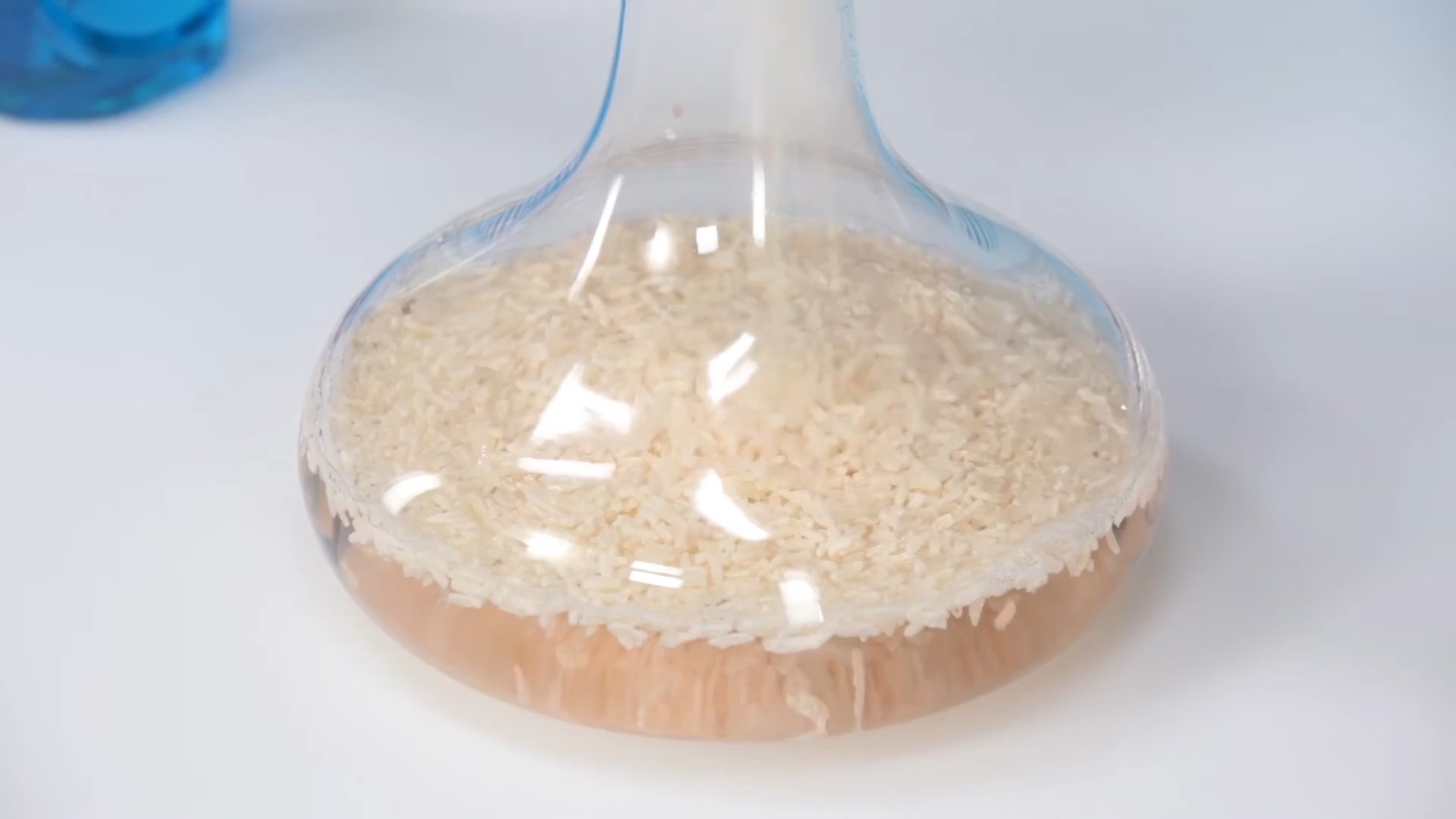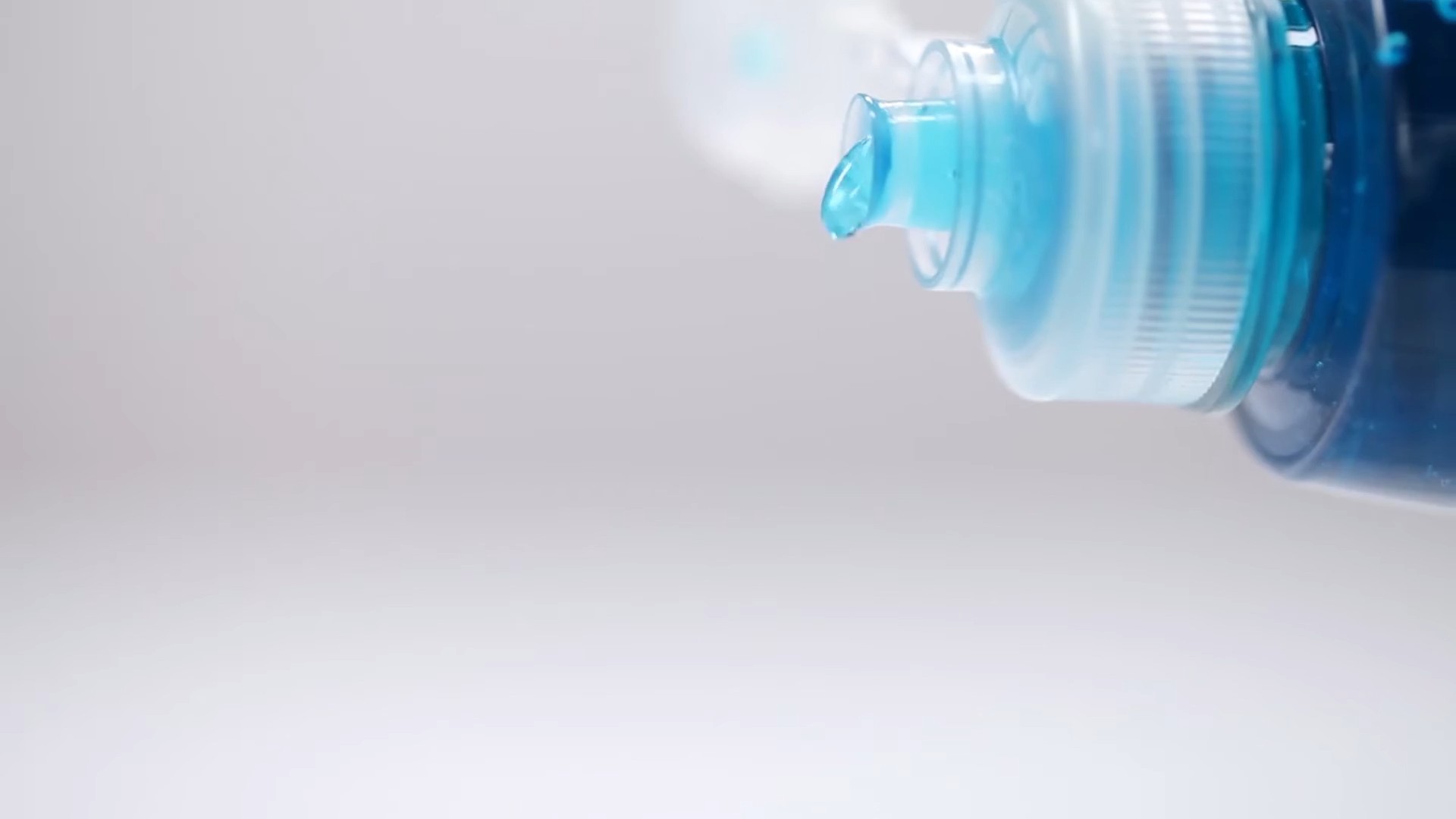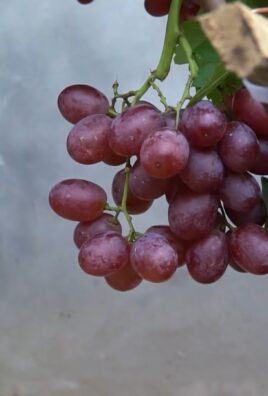Cleaning vases with rice and soap might sound like a quirky kitchen experiment gone wrong, but trust me, it’s a game-changer for anyone who loves displaying fresh flowers! How many times have you struggled to scrub the inside of a beautiful vase, only to be defeated by stubborn stains and hard-to-reach corners? I know I have!
Vases have been cherished vessels for centuries, dating back to ancient civilizations where they were crafted from clay and adorned with intricate designs. They weren’t just functional; they were symbols of beauty and prosperity. Today, while the materials and styles have evolved, the challenge of keeping them sparkling clean remains the same. That’s where this simple, yet effective, DIY trick comes in.
Let’s face it, nobody wants to display gorgeous blooms in a grimy vase. It detracts from the beauty of the flowers and can even harbor bacteria that shortens their lifespan. This is why cleaning vases with rice and soap is so essential. It’s a quick, easy, and eco-friendly way to restore your vases to their former glory, ensuring your floral arrangements always look their best. Plus, it’s incredibly satisfying to see those stubborn stains disappear with minimal effort. So, ditch the harsh chemicals and complicated cleaning methods – let’s get started with this simple, yet effective, DIY vase cleaning hack!

DIY Sparkling Clean Vases with Rice and Soap: A Simple Guide
Okay, so you’ve got a beautiful vase, right? Maybe it’s a family heirloom, a flea market find, or just something you picked up at the store because it looked pretty. But now it’s got that cloudy film, those stubborn water stains, or maybe even some dried flower residue clinging to the bottom. Don’t despair! You don’t need fancy cleaners or specialized tools. I’m going to show you a super easy and effective way to get your vases sparkling clean using just rice, soap, and water. Trust me, it’s a game-changer!
What You’ll Need
Before we dive in, let’s gather our supplies. This is a pretty low-key project, so you probably already have everything you need:
* Uncooked Rice: Any kind will do! I usually use white rice because that’s what I have on hand, but brown rice, long-grain, short-grain – it all works. The rice acts as a gentle abrasive to scrub away the grime.
* Dish Soap: Again, nothing fancy needed here. Your regular dish soap will work perfectly.
* Warm Water: Not too hot, not too cold – just comfortably warm.
* A Bottle Brush (Optional): This is helpful for vases with narrow necks, but not essential.
* A Soft Cloth or Sponge: For wiping down the outside of the vase.
* A Sink or Basin: To contain the mess (and there will be a little mess!).
The Cleaning Process: Step-by-Step
Alright, let’s get started! Here’s how I tackle cleaning my vases with rice and soap:
1. Rinse the Vase: First things first, give your vase a good rinse with warm water. This will help loosen any loose debris and get things prepped for the real cleaning action.
2. Add Rice: Now, pour about 1/4 to 1/2 cup of uncooked rice into the vase. The amount will depend on the size of your vase. You want enough rice to cover the bottom and have some room to move around. If it’s a really large vase, you might need even more. I usually err on the side of more rather than less.
3. Add Dish Soap: Squirt a generous amount of dish soap into the vase. I usually use about a tablespoon, but again, adjust based on the size of your vase. You want enough soap to create a good lather when you add water.
4. Add Warm Water: Fill the vase about halfway with warm water. Don’t fill it all the way to the top just yet, as you’ll need some room to shake things up.
5. Shake, Rattle, and Roll: This is the fun part! Cover the opening of the vase with your hand (or a stopper if you have one) and shake the vase vigorously. Shake it up and down, side to side, and in a circular motion. The rice will act as a gentle abrasive, scrubbing the inside of the vase and loosening any stubborn stains. I usually shake for a good minute or two, making sure to get all the surfaces.
6. Inspect and Repeat (If Necessary): After shaking, take a peek inside the vase. If you still see some stubborn stains or residue, add a bit more rice and soap, and repeat the shaking process. Sometimes, for really tough stains, I’ll let the rice and soap mixture sit in the vase for a few minutes before shaking again.
7. Empty and Rinse: Once you’re satisfied with the cleaning, carefully empty the vase. Be sure to catch the rice in a strainer or colander to prevent it from going down your drain. Then, rinse the vase thoroughly with warm water until all the soap and rice are gone.
8. Scrub with a Bottle Brush (Optional): If you have a bottle brush, now’s the time to use it. This is especially helpful for vases with narrow necks that are hard to reach with your hand. Just insert the brush into the vase and scrub any remaining residue.
9. Dry the Vase: Finally, dry the vase with a soft cloth or let it air dry. If you’re air drying, I recommend placing the vase upside down on a towel to allow any remaining water to drain out. This will help prevent water spots from forming.
Dealing with Stubborn Stains
Sometimes, you might encounter a vase with particularly stubborn stains that just won’t budge with the rice and soap method alone. Don’t worry, I’ve got a few tricks up my sleeve!
* Baking Soda Paste: For really tough stains, try making a paste of baking soda and water. Apply the paste to the stained area, let it sit for a few minutes, and then scrub with a soft cloth or sponge. Baking soda is a mild abrasive that can help lift stubborn stains.
* Vinegar Soak: If you’re dealing with hard water stains, try soaking the vase in a solution of equal parts white vinegar and water. Let it soak for a few hours or even overnight, and then rinse thoroughly. Vinegar is a natural acid that can help dissolve mineral deposits.
* Lemon Juice: Lemon juice is another natural acid that can be used to remove stains. Simply squeeze some lemon juice into the vase, let it sit for a few minutes, and then scrub with a soft cloth or sponge.
Tips and Tricks for Vase Cleaning Success
Here are a few extra tips and tricks I’ve learned over the years that can help you get the best results when cleaning your vases:
* Clean Regularly: The best way to prevent stubborn stains from forming in the first place is to clean your vases regularly. I try to clean mine every time I change the water.
* Use Distilled Water: If you live in an area with hard water, consider using distilled water in your vases. Hard water can leave mineral deposits that can be difficult to remove.
* Don’t Use Abrasive Cleaners: Avoid using abrasive cleaners or scouring pads on your vases, as these can scratch the surface.
* Be Gentle: When shaking the vase with rice and soap, be gentle. You don’t want to break the vase!
* Consider the Vase Material: Be mindful of the material your vase is made of. Delicate materials like crystal or antique glass may require extra care. If you’re unsure, test the cleaning method on a small, inconspicuous area first.
* For Narrow-Necked Vases: If you have a vase with a very narrow neck, you might find it difficult to get the rice in and out. In this case, you can try using a funnel or a small spoon to add the rice. You can also try using a pipe cleaner or a cotton swab to clean the inside of the neck.
* Preventing Future Stains: To help prevent future stains, consider adding a few drops of bleach to the water in your vase. This will help kill bacteria and prevent algae growth. However, be careful when using bleach, as it can damage some materials.
A Note on Antique Vases
If you’re cleaning an antique vase, it’s important to be extra careful. Antique vases can be delicate and easily damaged. Before cleaning an antique vase, I always recommend consulting with a professional conservator. They can advise you on the best cleaning methods for your specific vase.
However, if you’re determined to clean your antique vase yourself, here are a few tips:
* Test First: Always test the cleaning method on a small, inconspicuous area first.
* Use Gentle Cleaners: Use only gentle cleaners, such as mild dish soap and water.
* Avoid Abrasives: Avoid using abrasive cleaners or scouring pads.
* Don’t Soak: Don’t soak the vase for extended periods of time.
* Dry Carefully: Dry the vase carefully with a soft cloth.
Cleaning vases with rice and soap is a simple, effective, and eco-friendly way to keep your vases looking their best. With a little bit of elbow grease and these helpful tips, you can have your vases sparkling clean in no time! Happy cleaning!

Conclusion
So, there you have it! This simple yet remarkably effective DIY vase cleaning trick using rice and soap is a game-changer for anyone who loves displaying flowers or simply appreciates the beauty of a sparkling clean vase. No more struggling with stubborn stains, hard-to-reach corners, or the frustration of watching your beautiful vases lose their luster. This method is not only incredibly easy to execute, requiring minimal effort and readily available ingredients, but it’s also a far gentler alternative to harsh chemicals that can damage delicate glass or leave behind unpleasant residues.
Why is this a must-try? Because it works! The abrasive action of the rice, combined with the degreasing power of soap, creates a dynamic cleaning duo that effortlessly removes grime, mineral deposits, and that unsightly film that accumulates over time. It’s a cost-effective solution that saves you money on expensive cleaning products and prolongs the life of your cherished vases. Plus, it’s environmentally friendly, reducing your reliance on harsh chemicals that can harm the planet.
But the beauty of this DIY trick lies not only in its effectiveness but also in its versatility. Feel free to experiment with different types of rice. While regular white rice works perfectly well, you can also try using brown rice for a slightly more abrasive cleaning action, especially for heavily soiled vases. For particularly stubborn stains, consider adding a tablespoon of white vinegar to the mix. The vinegar’s acidity will help to break down mineral deposits and leave your vases sparkling clean. Another variation involves using a denture cleaning tablet dissolved in water along with the rice. The effervescent action of the tablet can help to loosen stubborn grime.
Don’t limit yourself to just vases! This cleaning method is also fantastic for cleaning other hard-to-reach items, such as decanters, bottles with narrow necks, and even intricate glass sculptures. Just adjust the amount of rice and soap accordingly to suit the size and shape of the item you’re cleaning.
We are confident that once you try this simple yet effective DIY vase cleaning trick, you’ll be amazed by the results. It’s a quick, easy, and affordable way to keep your vases looking their best, ensuring that your beautiful floral arrangements always have the perfect backdrop.
So, what are you waiting for? Gather your supplies, grab your dirtiest vase, and give this trick a try! We’re eager to hear about your experience. Share your before-and-after photos and your tips and tricks in the comments below. Let’s create a community of sparkling clean vases! We encourage you to share this article with your friends and family who appreciate the beauty of a well-maintained home. Let’s spread the word about this fantastic DIY vase cleaning solution and help everyone enjoy the beauty of sparkling clean vases.
Frequently Asked Questions (FAQ)
What kind of rice should I use?
Regular white rice is perfectly fine for cleaning vases. Its slightly abrasive texture is ideal for scrubbing away grime and mineral deposits without scratching the glass. However, you can also experiment with other types of rice. Brown rice, with its slightly rougher texture, can provide a more aggressive cleaning action for heavily soiled vases. Just be mindful of the vase’s material; if it’s particularly delicate, stick with white rice to avoid any potential scratches.
How much rice and soap should I use?
The amount of rice and soap you’ll need depends on the size and shape of your vase. For a standard-sized vase, start with about a quarter cup of uncooked rice and a squirt of dish soap (about a teaspoon). If the vase is particularly large or heavily soiled, you may need to increase the amount of rice and soap accordingly. The key is to ensure that there’s enough rice to effectively scrub the interior of the vase and enough soap to help lift away the grime.
What kind of soap should I use?
Any mild dish soap will work well for this DIY vase cleaning trick. Avoid using harsh detergents or abrasive cleaners, as these can damage the glass or leave behind unpleasant residues. A gentle, pH-balanced dish soap is ideal for effectively cleaning your vases without causing any harm.
How long should I shake the vase?
The amount of time you need to shake the vase will depend on the severity of the stains and grime. Start by shaking the vase vigorously for about a minute or two. Then, check the interior to see if the stains are starting to loosen. If not, continue shaking for another minute or two. For particularly stubborn stains, you may need to let the rice and soap mixture sit in the vase for a few minutes before shaking again.
Will this method scratch my vase?
While rice is generally gentle enough to clean glass without scratching, it’s always a good idea to exercise caution, especially when cleaning delicate or antique vases. To minimize the risk of scratching, use a smooth, unbroken grain of rice and avoid using excessive force when shaking the vase. If you’re concerned about scratching, you can also try using a softer abrasive material, such as crushed eggshells or baking soda, instead of rice.
Can I use this method on all types of vases?
This DIY vase cleaning trick is generally safe to use on most types of vases, including glass, ceramic, and plastic. However, it’s always a good idea to test the method on a small, inconspicuous area of the vase first to ensure that it doesn’t cause any damage or discoloration. Avoid using this method on vases with delicate finishes or intricate decorations, as the abrasive action of the rice could potentially damage these features.
What if the stains are still there after shaking?
If the stains are still present after shaking the vase with rice and soap, there are a few things you can try. First, let the rice and soap mixture sit in the vase for a longer period of time, allowing the soap to penetrate and loosen the grime. You can also try adding a tablespoon of white vinegar to the mixture, as the vinegar’s acidity can help to break down mineral deposits. For particularly stubborn stains, you may need to repeat the cleaning process several times.
How do I clean vases with narrow necks?
Cleaning vases with narrow necks can be challenging, but this DIY trick is still effective. Use smaller grains of rice, such as sushi rice, to ensure that they can easily pass through the narrow opening. You may also need to use a smaller amount of rice and soap to prevent the vase from becoming clogged. When shaking the vase, be sure to hold it securely and shake it gently to avoid breaking the neck.
How often should I clean my vases?
The frequency with which you should clean your vases depends on how often you use them and the type of flowers you display. As a general rule, it’s a good idea to clean your vases after each use to prevent the buildup of bacteria and mineral deposits. If you display flowers that tend to leave behind a lot of residue, such as lilies or tulips, you may need to clean your vases more frequently.
Can I reuse the rice?
It’s not recommended to reuse the rice after cleaning your vases. The rice will have absorbed the grime and bacteria from the vase, and reusing it could potentially contaminate other items. It’s best to discard the rice after each use.
Is this method safe for the environment?
Yes, this DIY vase cleaning trick is generally safe for the environment. It uses readily available, non-toxic ingredients, such as rice and dish soap, which are biodegradable and won’t harm the environment. By using this method, you can avoid using harsh chemicals that can pollute waterways and harm aquatic life.





Leave a Comment